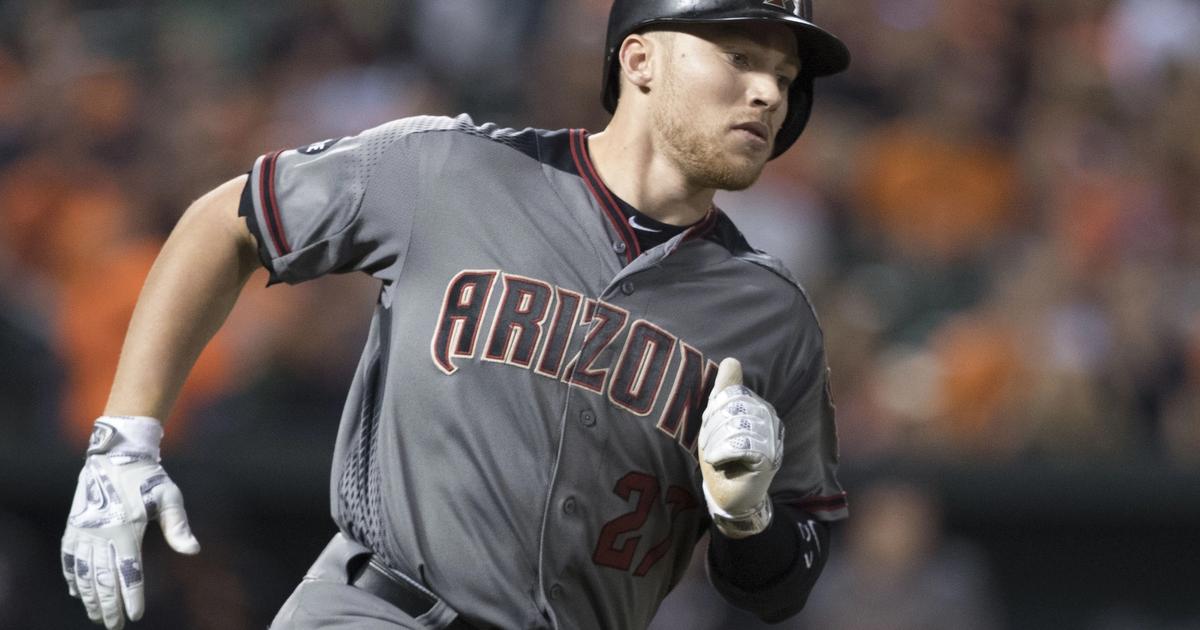(Photo Credit: Keith Allison)
As Spring Training has gotten underway, more teams are making moves necessary to help them win now or later. The Arizona Diamondbacks have been among the busiest teams in the last week with signing outfielder Jarrod Dyson to a two-year deal and making one of the biggest trades of the season on Tuesday with the Tampa Bay Rays and New York Yankees.
Like every trade and signing, there were parts that made sense and parts that made little sense regarding this deal. With that said, what went down in this trade that helped Arizona, but is also making people scratch their heads?
What made sense: Brandon Drury goes, D-backs add depth
If you read my article last week about a trade between the Diamondbacks, Rays and Milwaukee Brewers, you’ll remember that I said Brandon Drury needed to be involved in the blockbuster deal via the Brewers' end. Though the Yankees were the team that got Drury instead of the Brewers, this move made perfect sense for Arizona.
The Diamondbacks were stacked in the infield already with Chris Owings, Nick Ahmed, and Ketel Marte all having the ability to play anywhere in the field and Daniel Descalso taking primary second base duties as the season went down last year. Now that Drury’s gone, manager Torey Lovullo won’t have as hard of a time trying to decide how to get guys like Owings and Ahmed in the lineup every day. Owings can play the outfield too, but now he’ll likely be the regular second baseman.
In return, the Diamondbacks got pitcher Taylor Widener, the Yankees No. 14 prospect, to add to their fairly decent farm system. On the other side, Arizona made up for missing out on JD Martinez by trading their No. 4 prospect, left-handed pitcher Anthony Banda, for outfielder Steven Souza Jr. Souza, like Martinez, can spray hits to all fields, but he had a horrific month of September last season, hitting .159 with just one home run and one RBI in 20 games, and he’s never hit above .250 in a regular season. Still, he provides additional pop in a lineup that already has Paul Goldschmidt, Jake Lamb, AJ Pollock, and Yasmany Tomas, along with many other guys who helped contribute to the club hitting a franchise record 220 home runs last season.
The head-scratcher: Souza adds trouble to the outfield depth
There’s no doubt that Arizona needed an upgrade in the outfield if they lost out on Martinez, but they needed to move one of their starting outfielders. In the article I wrote last week, Tomas would’ve been a great addition to the Rays, who are in the middle of a rebuilding process. What makes little sense is why did Arizona acquire Souza without trading one of their outfielders?
If you look at the Diamondbacks outfield now, you’ll see why having this much depth can be a problem.
Player | 2017 Home Runs | 2017 RBI | 2017 Batting AVG |
|---|---|---|---|
AJ Pollock* | 14 | 49 | .266 |
David Peralta | 14 | 57 | .292 |
Yasmany Tomas* | 8 | 32 | .241 |
Steven Souza Jr. | 30 | 78 | .239 |
Jarrod Dyson* | 5 | 30 | .251 |
*Disabled list
Pollock, Tomas, and Dyson all spent significant amounts of time on the disabled list last season but in their best seasons, like Souza and Peralta, have been some of the best in the league.
Player | Best Season HR | Best Season RBI | Best Season Batting AVG |
|---|---|---|---|
A.J. Pollock (2015) | 20 | 76 | .315 |
Yasmany Tomas (2016) | 31 | 83 | .272 |
Jarrod Dyson (2016) | 1 | 25 | .278 |
Dyson hit a career high in home runs last season but he’s known for his speed, so Arizona will use him mostly in late game situations with maybe three starts a week at most. Pollock and Tomas can hit for power consistently when they’re healthy, and Pollock also has a Gold Glove under his belt.
Though Tomas’s contract isn’t the friendliest for teams to take on, he can opt out after this season which should be something for teams like the Rays to consider. Four of their five outfielders, including utility guys like Owings, Descalso, and Chris Herrmann, have the ability to play on Opening Day and the rest of the 161 games of the season which is why Arizona should’ve tried harder to trade one of their outfielders in this deal.
The Diamondbacks did what was necessary to improve the roster, but they added too much depth to a team that was trying to get rid of some of that depth to keep guys in the lineup every day.
Explore new topics and discover content that's right for you!
MLB The Show



